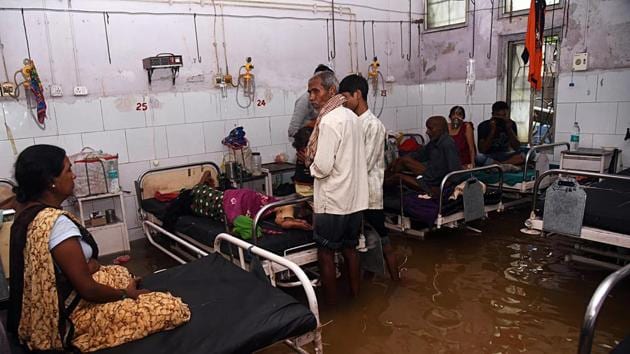India’s public spending on healthcare continues to remain lowest globally
India’s neighbours, such as Sri Lanka (1.68%), Indonesia (1.40%), Nepal (1.17%) and Myanmar (1.02%) are spending far more than India on healthcare, which could have an impact on its efforts to achieve Universal Health Coverage (UHC).
India released National Health Profile-2019 (NHP-2019) on Wednesday, and, at 1.28% of the GDP (2017-18 Budget Estimate), the country’s public expenditure on health continues to remain the lowest globally, making it seem like an uphill task to meet the target of 2.5% of the GDP by 2025 that the government is aiming at.

The comparative data from 2016 mentioned in the NHP shows among the 10 South East Asia Region countries, India, at 0.93% of the GDP, was above only Bangladesh at 0.42%.
India’s neighbours, such as Sri Lanka (1.68%), Indonesia (1.40%), Nepal (1.17%) and Myanmar (1.02%) are spending far more than India on healthcare, which could have an impact on its efforts to achieve Universal Health Coverage (UHC).
Per capita public expenditure on health in nominal terms has gone up from ₹621 in 2009-10 to ₹1,657 in 2017-18. The Centre:State share in total public expenditure on health was 37:63 in 2017-18.
Experts were also wary of India reaching the 2.5% target in next five years.
“If the spending is going by the same rate, both at the Central and state level, then it will hover around 1.2-1.3% of the GDP. In fact, it has stayed a little over 1% for the past 10 years. It’s pretty much stagnant, so 2.5% seems unlikely,” said Dr Sakthivel Selvaraj, director, health economics and policy, Public Health Foundation of India.
“Two-thirds of country’s public health spend is coming from the states and that has also stayed stagnant over the years. Despite the 14th financial commission recommendations that allocated more tax revenue to the states that was supposed to be used for health, it hasn’t been really. It’s unlikely to see a significant increase in the health spend in near future,” he added.
Anaemia continues to remain a huge health concern, with one in two women between 15-49 years suffering from lack of adequate blood and blood components in the body, shows the report. In children, the problem is more severe as close to 60% children between 6 and 59 months are anaemic. Iron deficiency is most common reason for developing anaemia, and affects human body function at every level.
“Anaemia is quite rampant in women and children in India, and it can create huge problems during childbirth if a pregnant woman is anaemic; the child can be born small or turn out to be malnourished, the woman could go into shock if there’s bleeding and the count is low. In urban areas you still find mild anaemia but in rural areas it is worse,” said Dr Anuradha Kapur, senior gynaecologist, Max Hospital.
Faulty lifestyle has lead to sharp rise in the number of people suffering from diabetes, hypertension or both.
The test results of people having undergone preventive screening at the government-run Non Communicable Diseases (NCDs) Clinic, shows of the 6.51 crore people screened, at least 6% people were diagnosed with hypertension (high blood pressure), and about 5% had diabetes. Heart disease, stroke and certain cancers were also on the rise with 0.30% having been diagnosed with heart diseases, 0.10% with stroke and 0.26% had cancer.
“The screening is being conducted as part of a national programme to know the exact burden of diabetes, hypertension, cardio vascular diseases, stroke and common cancers such as oral, cervix and breast. These are people who otherwise wouldn’t have known they had a health condition until till late. The government is ensuring people are diagnosed and put on treatment in time,” said a senior health
ministry official, requesting
anonymity.
Get Current Updates on India News, Lok Sabha election 2024 live, Election 2024 along with Latest News and Top Headlines from India and around the world.




